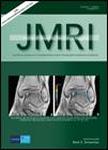版权所有:内蒙古大学图书馆 技术提供:维普资讯• 智图
内蒙古自治区呼和浩特市赛罕区大学西街235号 邮编: 010021

作者机构:UCLA VA Greater Angeles Healthcare Syst 11301 Wilshire Blvd MC 111E Los Angeles CA 90073 USA UCLA David Geffen Sch Med 200 Med PlazaB269 Los Angeles CA 90095 USA Univ Calif Los Angeles Phys & Biol Med Grad Program Los Angeles CA USA UCLA David Geffen Sch Med Dept Radiol Sci Los Angeles CA USA UCLA David Geffen Sch Med Div Cardiol Los Angeles CA USA VA Greater Angeles Healthcare Syst Los Angeles CA USA Univ Calif Los Angeles Dept Bioengn Los Angeles CA USA UCLA David Geffen Sch Med Dept Radiat Oncol Los Angeles CA USA
出 版 物:《JOURNAL OF MAGNETIC RESONANCE IMAGING》 (J. Magn. Reson. Imaging)
年 卷 期:2025年第61卷第1期
页 面:248-262页
核心收录:
学科分类:1001[医学-基础医学(可授医学、理学学位)] 1009[医学-特种医学] 10[医学]
基 金:National Institutes of Health VA Greater Los Angeles Healthcare System
主 题:clustering algorithm atrial fibrillation arrhythmia golden-step acquisition total variation quantitative MRI
摘 要:Background: Irregular cardiac motion can render conventional segmented cine MRI nondiagnostic. Clustering has been proposed for cardiac motion binning and may be optimized for complex arrhythmias. Purpose: To develop an adaptive cluster optimization method for irregular cardiac motion, and to generate the corresponding time-resolved cine images. Study Type: Prospective. Subjects: Thirteen with atrial fibrillation, four with premature ventricular contractions, and one patient in sinus rhythm. Field Strength/Sequence: Free-running balanced steady state free precession (bSSFP) with sorted golden-step, reference real-time sequence. Assessment: Each subject underwent both the sorted golden-step bSSFP and the reference Cartesian real-time imaging. Golden-step bSSFP images were reconstructed using the dynamic regularized adaptive cluster optimization (DRACO) method and k-means clustering. Image quality (4-point Likert scale), signal-to-noise ratio (SNR), contrast-to-noise ratio (CNR), edge sharpness, and ventricular function were assessed. Statistical TestsPaired t-tests, Friedman test, regression analysis, Fleiss Kappa, Bland-Altman analysis. Significance level P = 3 (96% for diastolic frame, 93% for systolic frame, and 93% for multiphase cine) and the percentages were significantly higher compared with both the k-means and real-time methods. Image quality scores, SNR, and CNR were significantly different between DRACO vs. k-means and between DRACO vs. real-time. Cardiac function analysis showed no significant differences between DRACO vs. the reference real-time. Conclusion: DRACO with time-resolved reconstruction generated high quality images and has early promise for quantitative cine cardiac MRI in patients with complex arrhythmias including atrial fibrillation.